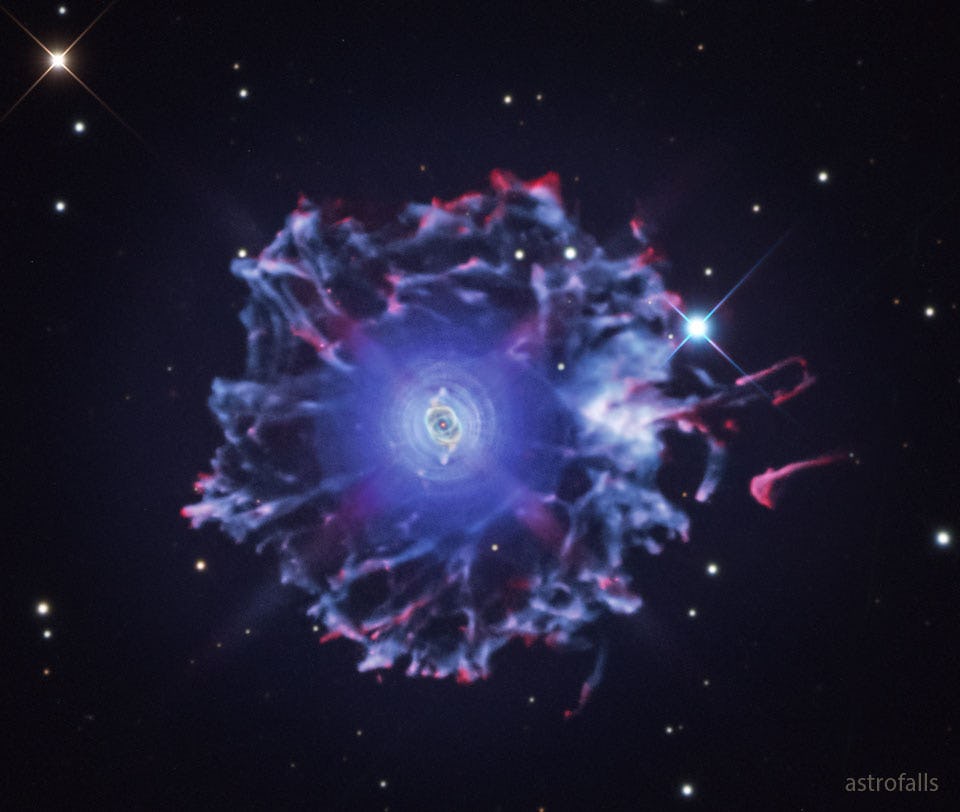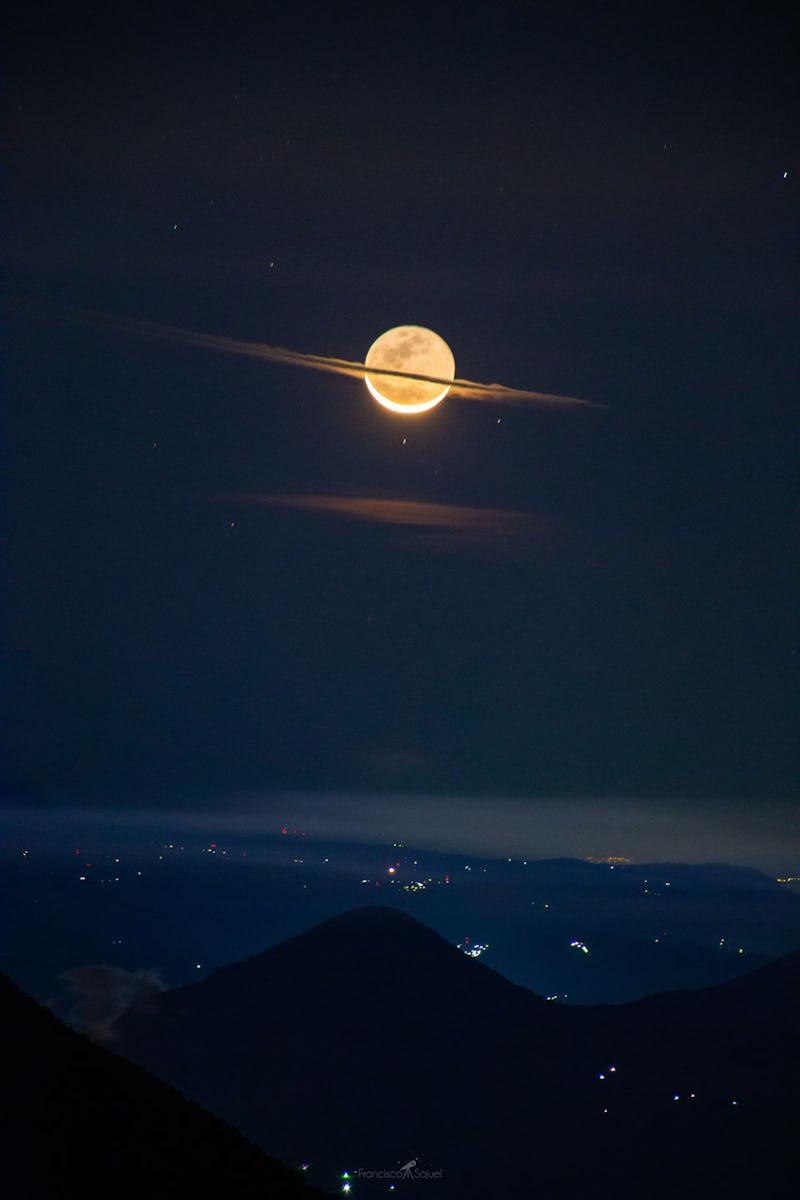When darkness
draws near,
'tis when
rises an old fear.
Fear lives
deep inside.
Fear of losing,
fear of failure.
Always try,
life changes,
you'll see why,
fear will
go elsewhere,
if you
will deny
and look
towards the
future and
another try.
Public Posts Stanwood, WA Stanwood, WA (zoom)
Barren the branch,
no leaves appear.
Will they return?
Perhaps, next year.
To love,
to laugh,
to cry, again,
to feel,
to know
you have a friend.
To say
the words,
so often
not said,
"I love
you so"
is what
she spoke.
Stay here
with me,
one night,
more, for
I need
you more
then I
can say.
If you
cannot stay
anymore,
I will
show you
the door.
Goodbye love,
perhaps we
will meet
once again.
Unti then,
let us be
just friends.
NASA Astronomy Picture of the Day:
What created the unusual halo around the Cat's Eye nebula? No one is sure. What is sure is that the Cat's Eye Nebula (NGC 6543) is one of the best known planetary nebulae on the sky. Although haunting symmetries are seen in the bright central region, this image was taken to feature its intricately structured outer halo, which spans over three light-years across. Planetary nebulae have long been appreciated as a final phase in the life of a Sun-like star. Only recently however, have some planetaries been found to have expansive halos, likely formed from material shrugged off during earlier puzzling episodes in the star's evolution. While the planetary nebula phase is thought to last for around 10,000 years, astronomers estimate the age of the outer filamentary portions of the Cat's Eye Nebula's halo to be 50,000 to 90,000 years.
Photo by Bray Falls
"While many American students and their parents worry that the next mass shooting could happen at their school, schools are also facing a number of other threats that do not involve guns. Many of these threats are related to the mental health of educators and students" .... Read more
What happened to love?
What happened to fame?
Why has our life,
gone incredibly lame?
If you know the answer,
please tell me now,
for all of my feelings
I will not disavow.
Come forth the morning.
Bring in a new dawn.
Let the Sunbeams,
create brightness and shadow,
while making us warm,
may a warm rain appear, as
the garden is thirsty.
I will write things
about words and how,
they will play against,
one and another.
Isn't it hard?
Isn't it just,
when you
find a new love,
it isn't enough.
Draw forth the comments,
tell us we're wrong,
you won't get well here,
for you don't belong.
There is no need
for you to sit there,
with your pompous attitude,
and when you don't care.
Give it a rest,
you said to me,
but I cannot do it,
so please let me be.
Let me enjoy life's joys
for if I don't, my mind
plays not with toys.
NASA Astronomy Picture of the Day:
Why does Saturn appear so big? It doesn't -- what is pictured are foreground clouds on Earth crossing in front of the Moon. The Moon shows a slight crescent phase with most of its surface visible by reflected Earthlight known as ashen glow. The Sun directly illuminates the brightly lit lunar crescent from the bottom, which means that the Sun must be below the horizon and so the image was taken before sunrise. This double take-inducing picture was captured on 2019 December 24, two days before the Moon slid in front of the Sun to create a solar eclipse. In the foreground, lights from small Guatemalan towns are visible behind the huge volcano Pacaya. News: APOD Receives First Outreach Prize from the International Astronomical Union
Photo by Francisco Sojuel
Why?
If you are a just God,
why does this disease,
happen to good people?
Please tell me, so I
can understand, for
I do not, at the moment
The light,
the shadow,
meld into grey,
A colorful spot,
who's to say?
I love you, strange you are,
as we await the end of day.
I will always love you,
until I have gone away.








.jpg?fit=crop&w=280&h=280&q=93)







.jpg?fit=crop&w=200&h=200&crop=faces)



 - Copy.jpg?fit=crop&w=280&h=280&q=93)


R.jpg?auto=format&fit=clip&w=600)





















